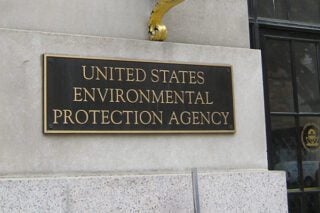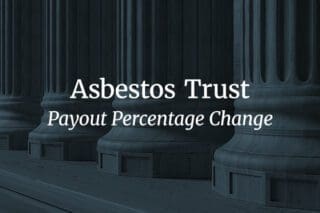
Thereasea Delerine Clark Elder was an advocate for her Black community. She grew up near an asbestos mill and was vocal about the impact of asbestos on her family and community.
In her many years, she spoke of the environmental racism she experienced growing up in Charlotte, North Carolina. Thereasea died on January 5, 2021, at 93 years old.
A Childhood Marred by Asbestos
Thereasea Delerine Clark Elder moved from Lancaster, South Carolina to North Carolina when she was a little girl. The family settled in the predominantly Black neighborhood of Greenville, North Carolina. The neighborhood was part of the Charlotte-metro area.
Thereasea lived on Hamilton Street. Her home was across the street from the Southern Asbestos Company Mills. The proximity to the mill exposed Thereasea to white asbestos dust throughout her childhood.
Thereasea’s entire family faced the risks of long-term asbestos exposure. Thereasea passed away on January 5, 2021, at the age of 93.
Quotes from Thereasea recall white asbestos dust covering her childhood home. Employees of the asbestos mill would open the windows on hot summer days to get a breeze while they worked. As a result of the asbestos dust, Thereasea explained they often had to clean her home’s screens and doors twice a day in the summer.
However, Thereasea and her community’s asbestos exposure wasn’t limited to fibers carried through the wind. She also recalled playing in piles of asbestos waste from the mill as a child. According to Thereasea, the dump pile of raw asbestos was twenty feet high at times.
According to published interviews, Thereasea didn’t know asbestos was dangerous as a child. However, she remembered seeing community members fall ill. For example, some of her family members from the same community died from lung cancer. Her husband, and childhood sweetheart, died of lung cancer in 1987. He was also a World War II veteran.
She also recalls the mill employees as small people who coughed a lot. These health impacts from working with asbestos aren’t unusual. Occupational exposure is often more likely to cause asbestos diseases.
Pursuing Nursing to Serve a Hurting Community
Seeing years of environmental racism impact her community inspired Thereasea to pursue a career in nursing. In a 1993 interview, Thereasea said as a young girl, she thought a nurse in her house could have saved her two siblings who died as toddlers.
She attended the nursing program at Lincoln Hospital in Durham, North Carolina through the U.S. Cadet Nurses Corps. In 1948, after three years in the U.S. Cadet Nurses Corps, Thereasea began working at the Good Samaritan Hospital in North Carolina. The hospital was the first private hospital in the state built specifically to treat Black patients in Charlotte.
Thereasea left Good Samaritan Hospital to work in public health in the early 1960s. She felt there was a lack of health education and disease prevention in the community. Thereasea was one of only two Black nurses employed by the Mecklenburg County Health Department at the time.
Remembering the History of a Community Destroyed by Environmental Racism
In addition to her passion for improving the health of the Black community, Thereasea was a community historian. She began the Charlotte-Mecklenburg Black Heritage Committee in 1992. Thereasea also served as the chairman of the Greenville Historical Society.
“We talk about [asbestos] in the ceiling, but this was the raw material that we played in and walked in every day.”
-Thereasea Delerine Clark Elder, June 25, 1993
Her passion for history played a large role after Greenville was destroyed as part of the 1966 Greenville Urban Renewal project. Thereasea’s neighborhood was demolished to make room for an expressway. The various neighborhoods that were bulldozed, including Greenville, displaced nearly 10,000 residents.
Thereasea was dedicated to preserving the history of the Greenville community after it was razed. Thereasea believed Greenville was destroyed to scatter those affected by the asbestos mill. According to her, it was done to prevent blame for the asbestos diseases from being cast on the community government and the Southern Asbestos Company Mills.
Asbestos victims and their families continue to come forward with stories like Thereasea’s. These stories push public health officials and lawmakers to identify and resolve asbestos safety concerns impacting those throughout the United States.




